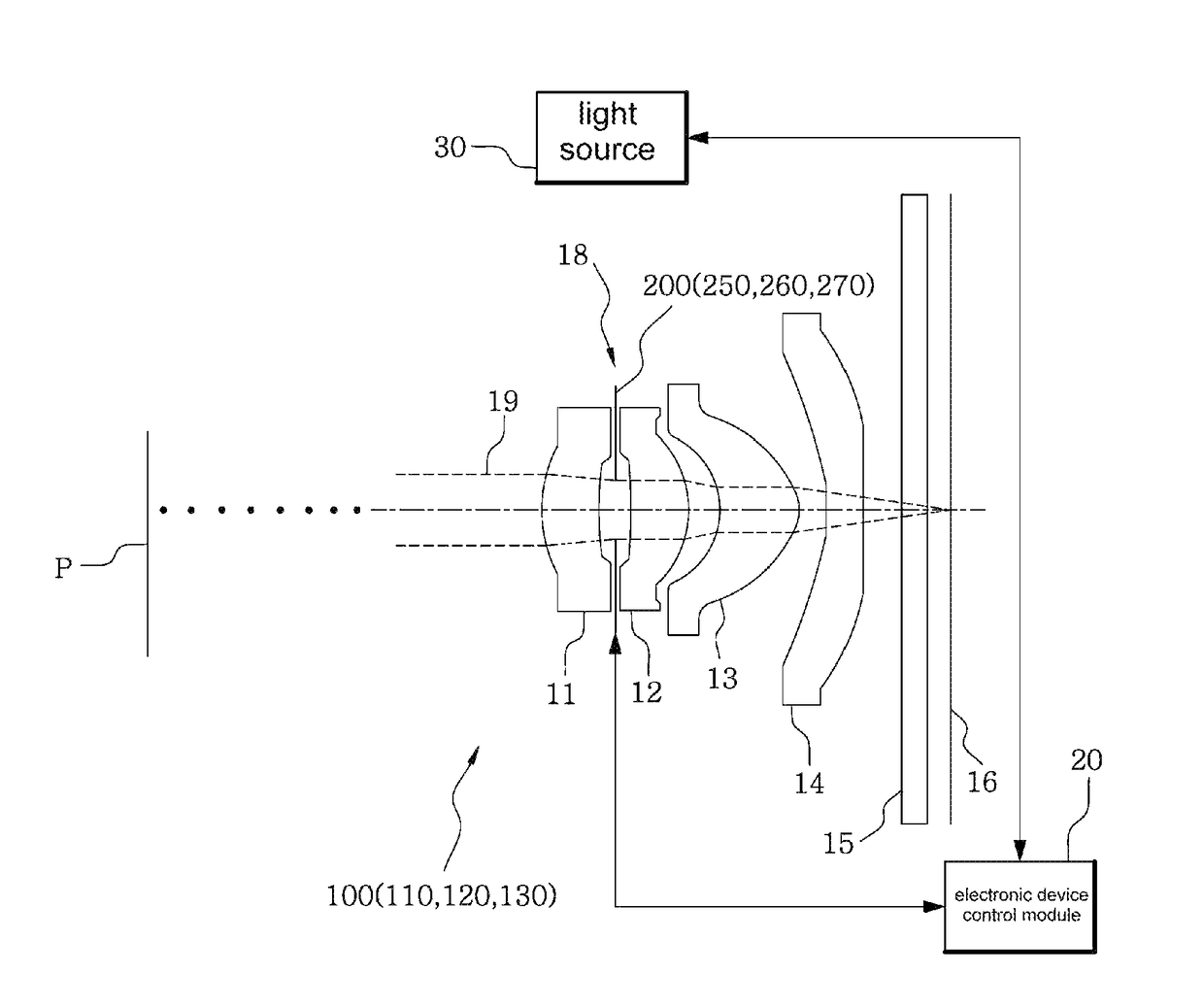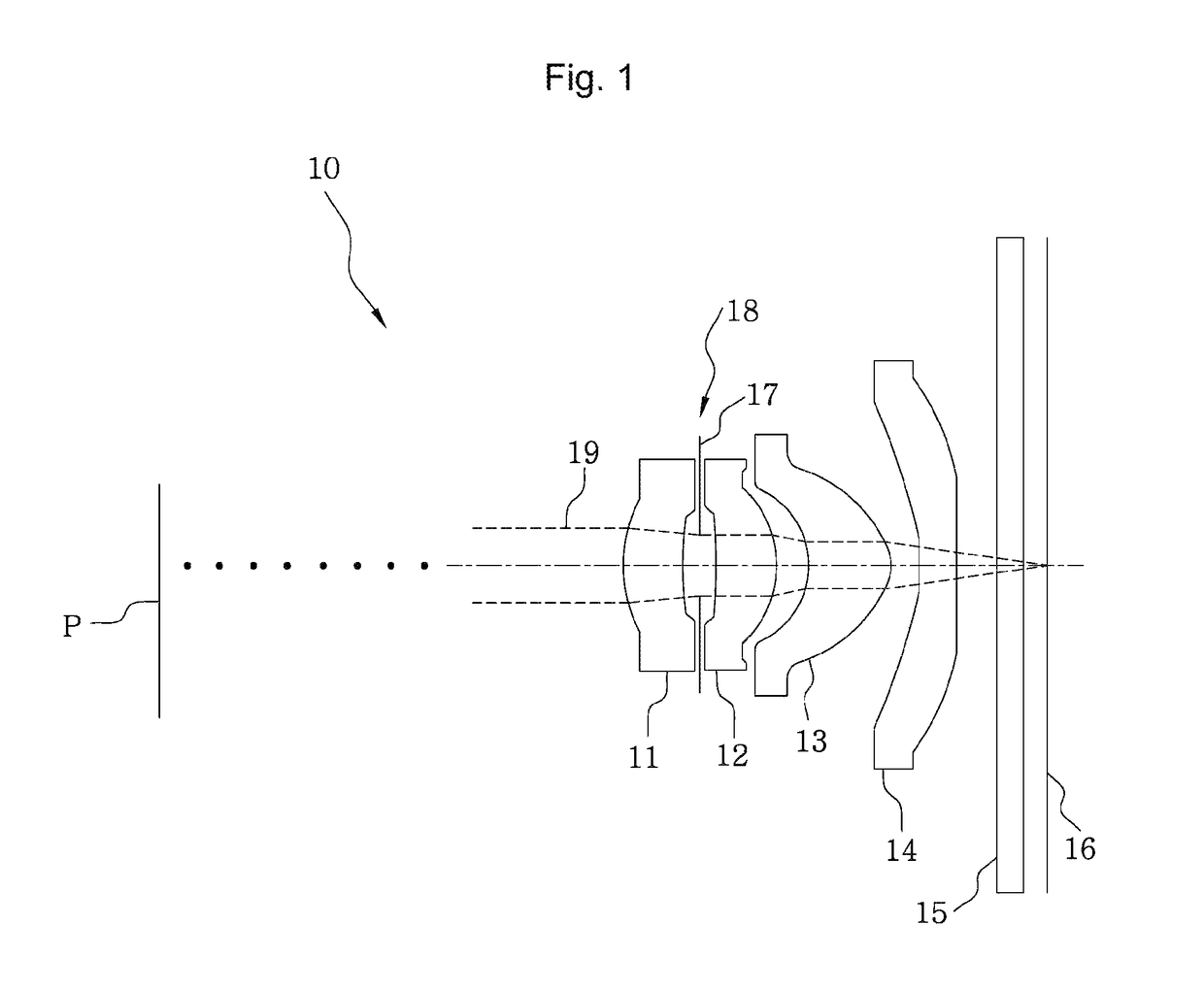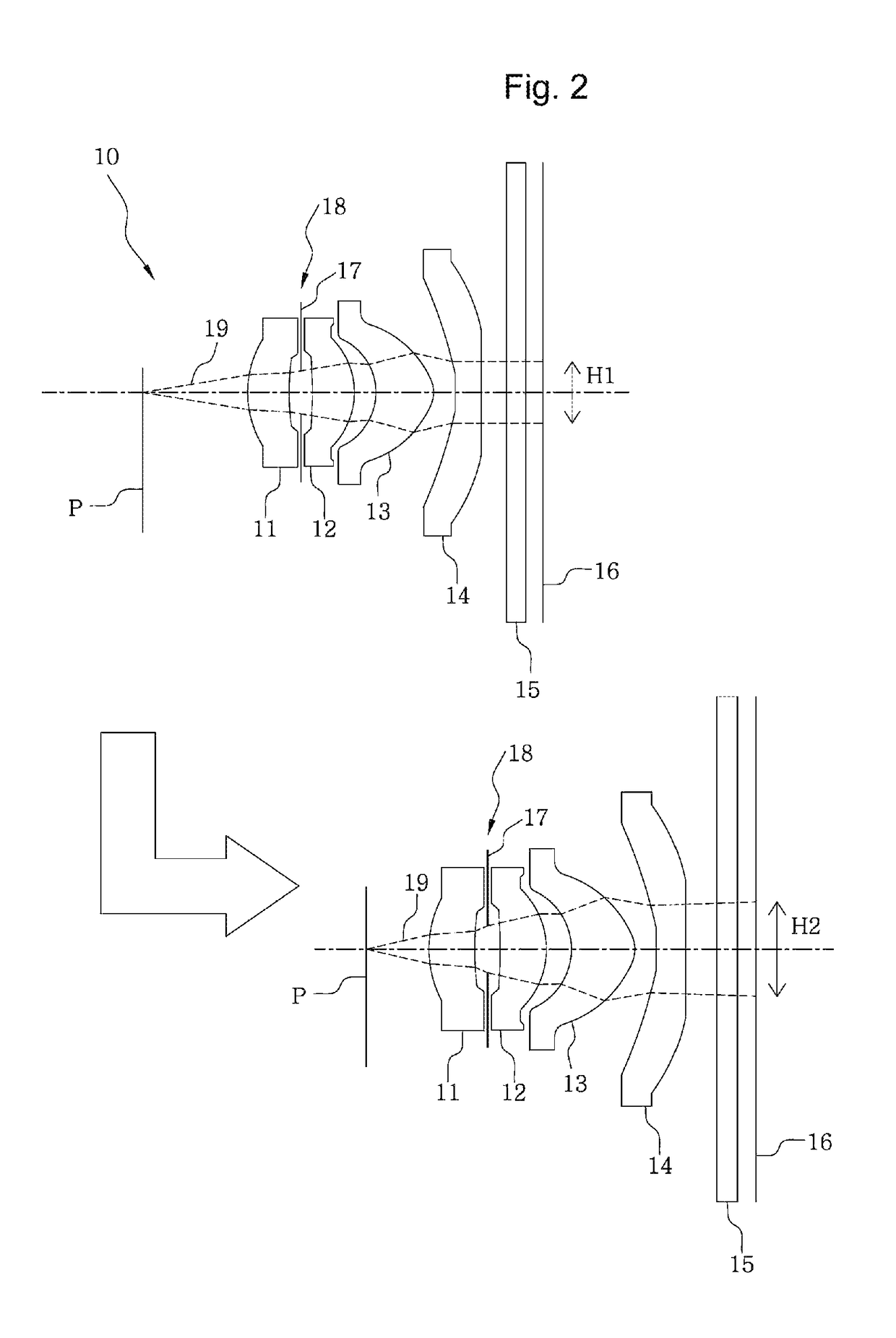Optical lens system for camera
a technology of optical lens and camera body, which is applied in the field of optical lens system for cameras, can solve the problems of reducing affecting the use of the optical lens system of the camera, and affecting the use of the optical lens system by the user, so as to reduce the application of the product, reduce the width, and increase the overall length of the product
- Summary
- Abstract
- Description
- Claims
- Application Information
AI Technical Summary
Benefits of technology
Problems solved by technology
Method used
Image
Examples
Embodiment Construction
[0045]Hereinafter an optical lens system for a camera according to the present invention is described in greater detail with reference to the accompanying drawings.
[0046]As shown in FIGS. 3 and 4, according to an embodiment of the present invention, an optical lens system 100 is systematically configured with an object image formation member 16 for forming a captured image corresponding to an object P, which has a CCD device or CMOS device for forming images disposed therein, optical lenses 11, 12, 13, and 14 arranged ahead of the object image formation member 16, an aperture stop area positioned in a front space of the optical lenses 11, 12, 13, and 14, gap spaces between the optical lenses 11, 12, 13, and 14, or a rear space of the optical lenses 11, 12, 13, and 14, and an optical filter 15 disposed before the object image formation member 16 to cut off unnecessary light beams (for reference, there may be one or more optical lenses 11, 12, 13, and 14. Here, in case there is one op...
PUM
 Login to View More
Login to View More Abstract
Description
Claims
Application Information
 Login to View More
Login to View More - R&D
- Intellectual Property
- Life Sciences
- Materials
- Tech Scout
- Unparalleled Data Quality
- Higher Quality Content
- 60% Fewer Hallucinations
Browse by: Latest US Patents, China's latest patents, Technical Efficacy Thesaurus, Application Domain, Technology Topic, Popular Technical Reports.
© 2025 PatSnap. All rights reserved.Legal|Privacy policy|Modern Slavery Act Transparency Statement|Sitemap|About US| Contact US: help@patsnap.com



